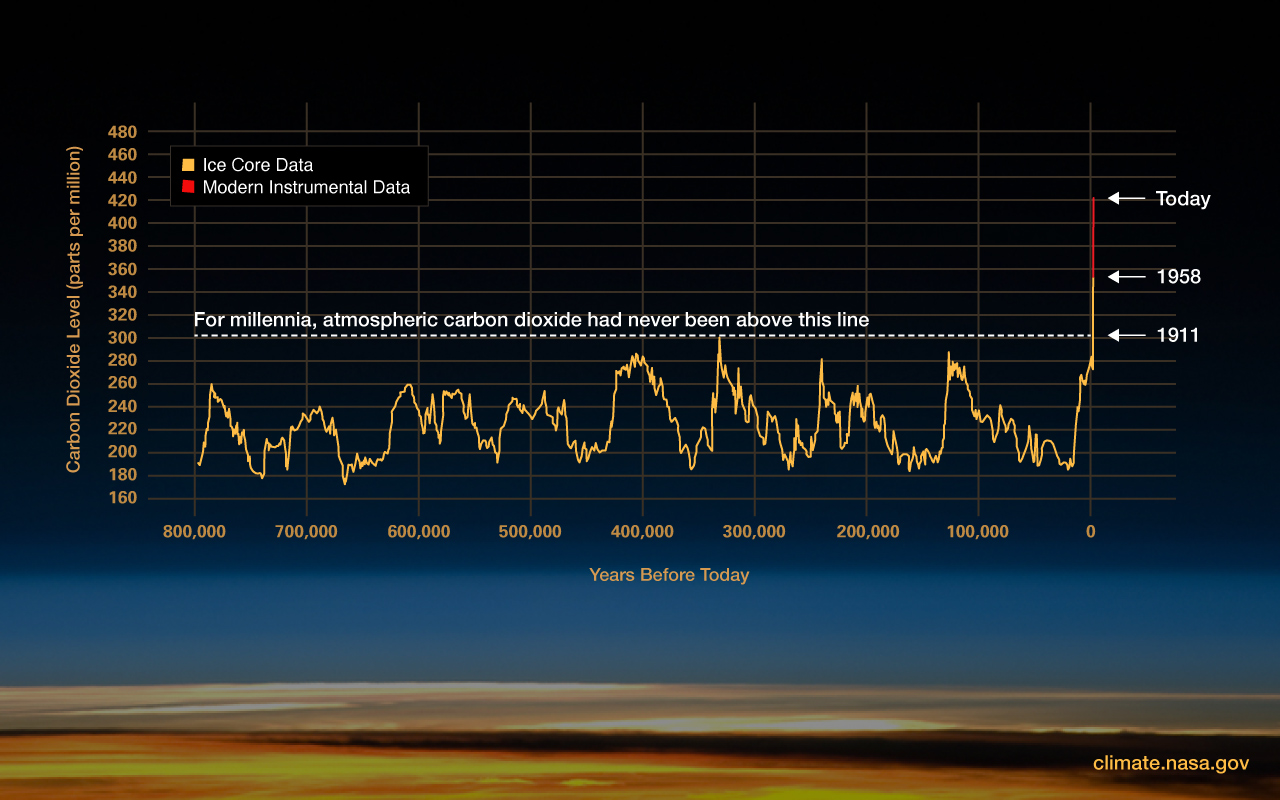How might Earth’s atmosphere, land, and ocean systems respond to changes in carbon dioxide over time?

The amount of anthropogenic carbon dioxide (CO2) absorbed by Earth's life forms, ocean, and other "sinks" might decrease as time goes by. Natural carbon sinks (the carbon absorbers, as opposed to "sources," which release carbon) on land and in the ocean have become less effective over time. That is, natural sinks that removed about 60% of annual human-caused CO2 emissions in 1959 now remove about 55% today.
Scientists are concerned that these natural sinks might lose even more of their absorbing power in the future. For example, the ongoing deforestation in the Amazon is causing that area to transition from being a deep sink to a seasonal source of CO2. The result: a greater proportion of human-caused carbon dioxide emissions could remain in the atmosphere. This would then amplify warming of Earth’s surface and ocean, with warming-driven losses from land-based ice sheets and glaciers causing further rises in global sea levels for centuries to come. Today's natural sinks are starting to become tomorrow's carbon dioxide sources, increasing the proportion in annual emissions that stay in Earth’s atmosphere.
Some 20,500 years ago, at the coldest part of the last glacial phase (commonly called the Ice Age), CO2 levels were about 185 parts per million (ppm), based on dated samples of air trapped in ice cores taken from the Antarctic and Greenland ice sheets. Over 10,000 years later, the world warmed out of that icy era into today’s warm period, called the Holocene due to slow variations in Earth’s orbit. Over that time, CO2 levels increased to 265 ppm, which was about 1 ppm every 125 years. From 10,500 years ago to the year 1850, CO2 levels slowly increased to about 280 ppm, an increase to which early humans are thought to have contributed with the development of farming and the slow deforestation of forests over time.
Since 1850, CO2 levels have increased from 280 ppm to around 420 ppm. Scientists understand this increase to be inextricably tied to the human burning of fossil fuels (confirmed by chemical analysis of that rise in CO2). That's a near 50% increase in CO2 levels in just 172 years (about 1 part per million every 23 weeks)! That's over 300 times faster than the natural increase in CO2 levels associated with the warming of Earth's surface coming out of the Ice Age.
READ MORE
































